The reason why most people consider receiving orthodontic care is to achieve a beautiful, healthy smile that grows self confidence and self esteem. If you wish to have the best smile possible, you may need to undergo orthodontic treatment in order to achieve your straightest, best possible smile.
Orthodontic appliances consist of plastic, ceramic, or metal. They may either be brackets bonded to the teeth or removable. Applying a gentle force in a certain direction will result in braces gradually pushing teeth to the correct direction.
In the past, a bracket with a metal band was placed around each tooth. Nowadays, you have the freedom to choose between a wide variety of orthodontic treatment options that include metal braces, clear braces, clear aligners, and more to find the option that works best for your lifestyle and preference. The latest appliances are made to move teeth more comfortably and faster. Today, orthodontic treatment is convenient and possible at any age!
Treatment duration is not fixed and usually takes somewhere between one and three years, depending on a range of factors that include treatment method, age, and the severity of your case. You are a crucial factor in your own treatment’s success! The efficiency of your treatment will depend on your level of diligence and involvement. For children, getting early or interceptive treatment can also help reduce treatment time.
Before the commencement of your orthodontic treatment, your doctor will review all available options with you, along with the estimated duration of your treatment plan. To learn more about orthodontics in Villa Park & Westmont, IL and the innovative treatments we offer, give us a call today!
The American Association of Orthodontists recommends that every child should see an orthodontic specialist no later than age 7. Why? Because it is such a vital formative time for children in jaw, facial, and tooth development that will impact their looks and smile for the rest of their lives. Early treatment allows orthodontics to aid development of the jaw to achieve the ideal healthy, aesthetic, and functional smile results that will last a lifetime and guard against more extensive, expensive orthodontic and even surgical treatment being needed in the future.
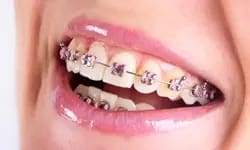
This type of braces tends to be the most common and have become more comfortable today. It is produced from high-grade stainless steel and consists of metal braces that use archwires and metal brackets to straighten your teeth. Metal braces allow you to add colored rubber bands to give a more attractive smile.
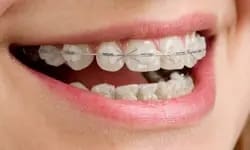
Ceramic braces are produced from clear, making them less visible on the teeth than metal braces. This is why ceramic braces are only mainly on adult and older teenage patients with cosmetic issues. While they are not the most visible, they require that one dedicates more attention to oral hygiene, as these braces are brittle and often larger than metal braces. Therefore, ceramic braces are often used more on upper front teeth.
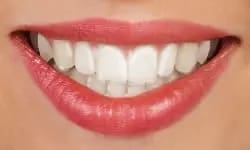
These refer to a series of comfortable, removable, invisible acrylic trays used in straightening the teeth like braces. The aligners are not only invisible, they can be removed, so you can eat whatever you like during treatment, plus flossing and brushing wouldn’t be an issue. The aligners offer comfort and they do not possess metal that can cause abrasions during treatment.
Once you have your braces on, you need to know how to take care of them the right way throughout the course of your orthodontic treatment to ensure that your treatment goes as smoothly and quickly as possible!
Don’t worry, before long you will be eating potato chips and popcorn again before you know it. However, in the meantime you will need to first exercise some care and patience and avoid foods that could cause any damage to your braces.
Below are common foods that you should avoid as much as possible while you have braces:
After getting braces for the first time, your teeth and mouth may feel a little sore and tender. This is totally normal and will soon subside with time. You can relieve the pain by taking one teaspoon of salt dissolved in warm water. Gargle and swish this solution in your mouth for a few minutes, without swallowing the salt water.
You can also take pain relievers if the pain deteriorates after rinsing. You could start feeling some irritation on your cheeks, tongue, and lips for up to two weeks as they get used to the braces. Let us know if you’re experiencing this, and we can provide you with some wax to put over the braces to help reduce the tenderness.
During treatment, it is possible that the bands and wires on your braces could become loose. Get in touch with us immediately if you notice this happening so that we can help you repair the appliance. If a piece of your appliance falls off, make sure you come with it to the office.
The loose wire can be temporarily fixed with the eraser end of a pencil or the back of a spoon to gently return the wire into place. If your cheeks and lips are getting irritated due to the loose wire, place a wet cotton ball or wax over the broken wire to help alleviate the pain until you’re able to come into the office for repair.
Damaged appliances can prolong your treatment duration, so make sure you take good care of all your appliances. Your jaw and teeth can only be realigned if you consistently wear the headgear, rubber bands, or other devices prescribed to you by your doctor!
As an athlete, you can fully participate in sports during the course of your orthodontic treatment! It is recommended that you protect your appliance and teeth by wearing a mouthguard. Talk to your doctor if you have trouble getting the perfect mouthguard for you.
If an accident occurs during sports, immediately check your appliances and mouth to see if there is any damage. If your appliance becomes damaged or your teeth become loosened, please visit our office immediately. The discomfort can be temporarily alleviated by rinsing your mouth with warm saltwater or applying wax.

Clear aligner treatment makes use of a number of removable, invisible, and comfortable aligners that make it possible for you to smile during and after treatment. Clear aligners are produced using effective 3D computer imaging technology.
Aside from the fact that the aligners are virtually invisible, they can also be removed, making it completely possible for you to eat and drink whatever you like while you are undergoing treatment. You can also floss and brush with no issues. Clear aligners also offer more comfort than traditional braces. The aligners have no wires or metal, which means that less time will be spent in the doctor’s office making adjustments. You will also be able to view your virtual Smile Plan at the beginning of treatment, so you can have a great idea of what your teeth will look like at the completion of your treatment to keep you motivated and on schedule!
Each set of aligners is worn for about two weeks, with the patient taking them off only to floss, brush, eat, and drink. Your teeth moves little by little each week as each aligner is replaced with the next in the series until the desired level of straightening has been achieved. You will need to come in and visit us every six weeks so we can check the progress of your treatment. The treatment takes an average of 15 months, and you will wear between 18 and 30 aligners during this period.
Millions of Americans are suffering from severe neck and facial pain coupled with recurring headaches. Sometimes this pain results from Temporomandibular Disorder (TMD).
Your lower jawbone is connected to the skull by your temporomandibular joints (TMJ). These joints are engaged and used a lot throughout the day during yawning, swallowing, and speaking. Pain in and around these joints can result in great discomfort and may even lead to restriction of movement.
If you experience any of the above symptoms, get in touch with our office. Your dentist will confirm if you have TMD and make necessary recommendations.
Here are some steps you can follow at work or home to prevent the occurrence of TMD or prevent it from getting worse:
For patients who desire a brighter smile, we have lots of techniques and products available, and it can be a challenge to choose from the wide range of options available. Before you start any teeth whitening routine, you should consult your doctor and discuss the differences between at-home whitening and professional whitening.
In-office whitening remains the most effective and efficient professional teeth whitening option, and it is usually carried out in a dental clinic or office. Your dental professional will apply a whitening gel to your teeth’s surface. This appointment generally takes around 90 minutes and results can be immediate.
This is a type of professional whitening where whitening gel and custom-made trays are used. The dentist puts the gel in custom-fitted trays and fits them perfectly over the teeth. Hydroxyradicals help to whiten the teeth, as the peroxide in the gel breaks down. This process, unlike strips, is effective at whitening all-natural teeth. This teeth whitening procedure takes around two weeks, although you may start seeing significant results in about three to five days.
When it comes to teeth whitening, there are lots of over-the-counter teeth whitening options, and one popular whitening product is known as “paint-on” teeth whitener. This whitener is less expensive than professional options or whitening strips, and it is available over the counter. Paint-on whiteners are made up of a gel that is usually applied to the tooth with a brush. The whitening gel becomes a hardened film that forms a coating on the teeth and dissolves in the mouth. Before adopting any teeth whitening option, make sure you consult your dental professional.
Teeth whitening strips are flexible, thin plastic (polyethylene) strips partly consisting of hydrogen peroxide film. There are two types of strips that usually come with whitening strip kits: a strip for the upper teeth, and a strip for the lower teeth. To apply the whitening agent, the strips are placed across your teeth and pressed gently to ensure they are in contact with all the teeth. Typically, teeth whitening strips are for a period of 30 minutes each day. Treatment duration varies.
Mouthwashes and toothpastes remain the most cost-effective options. They are effective in the removal of surface stains and have whitening capabilities using mild abrasives. However, according to results obtained from professional whitening procedures, these products lack actual whitening capabilities. They only remove stains and lighten the teeth mildly.
If you’re interested in whitening your smile, give us a call and we can answer any questions you might have and schedule an appointment!
Here at Chawla Orthodontics, we are 100% committed to providing the highest level of comfort and convenience for all of our patients, which is why we are proud to offer the iTero Digital Impression System! Thanks to iTero, there’s no need to worry about the discomfort, gagging, or unpleasant tasting goop you associate with taking traditional impressions using a tray.
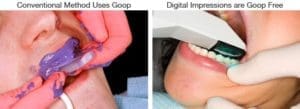
The iTero scanner can capture the gum and teeth’s structure digitally through the latest optical innovation. The scanner is a hand-held and compact wand. The dentist uses a radiation-free laser to scan your mouth and, within three minutes, a digitally perfect, 3D impression of the teeth and surrounding tissue structures is rendered by the laser. Using digital software, you can then follow how the scan progresses, which includes a 3D model of your teeth on the screen. The iTero scanner is used for a various restorative treatment such as bridges, crowns, inlays/onlays, implants, and veneers, as well as clear aligner orthodontic treatment.
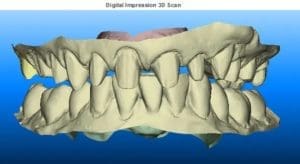
Genuine orthodontic emergencies are not common, but we are always here to help when they occur. As a general rule, always get in touch with our office when you experience a painful appliance issue that is hard to bear, and we will schedule an appointment to deal with the issue.
It might surprise you to learn that there are lots of issues you can deal with temporarily until you visit our office! If you’ve got a loose piece that is removable, place it carefully in an envelope or plastic baggie and come with it to your next appointment. If you are getting poked by your braces, place some soft wax on the protruding part, or you can use needle-nosed pliers to drag it to the other side, replacing it in the tube on the back tooth.
Once you get rid of your discomfort, you should still get in touch with our Westmont orthodontics emergency practice immediately to schedule an appointment for the repair of any problem. Your treatment plan may get disrupted if you allow your appliance to remain damaged for an extended period of time.
Orthodontic emergencies can happen at any given moment, and they include infected or severely swollen gums or face, oral pain in your jaw, teeth/gums, and can consist of any trauma that happens to the mouth and face. If you experience an emergency, seek help immediately at any of our Westmont and/or Villa Park locations.
Any issue involving your teeth, gums, jaw, mouth, and face constitutes an orthodontic emergency. If you experience any pain, swelling, or trauma, do not be afraid to contact us immediately. Our Westmont office is here to help!
A broken bracket does not count as an orthodontic emergency. Although it is not an emergency, your broken bracket should be fixed sooner than later. The longer you wait to get it fixed, the longer your teeth straightening journey will take. Contact our Westmont location to schedule an appointment.
Early orthodontic treatment is suggested and performed when the child’s oral condition presents certain developing signs. For example, difficulty in chewing or biting, growing teeth problems, jaw shifting, protruding teeth, and more. If your child has any of these signs, or if you have any other concerns contact our Villa Park office and let’s schedule an appointment.
The best age to start an early orthodontic treatment is around the age of seven. Early treatment is usually needed while there are baby teeth still present, and can be dire for cases of really crooked teeth or a misaligned bite. If your child is in need of a consultation, feel free to contact our Villa Park office to schedule an appointment.
Not every child will need early orthodontic treatment, so it is better to consider a visit to the orthodontist for an oral examination, and to see if your child is in need of treatment or not. This will also reduce the chances of further complications in your child’s teeth and jaw developing and the need of future treatments. If you would like to schedule an appointment please contact our Villa Park office.